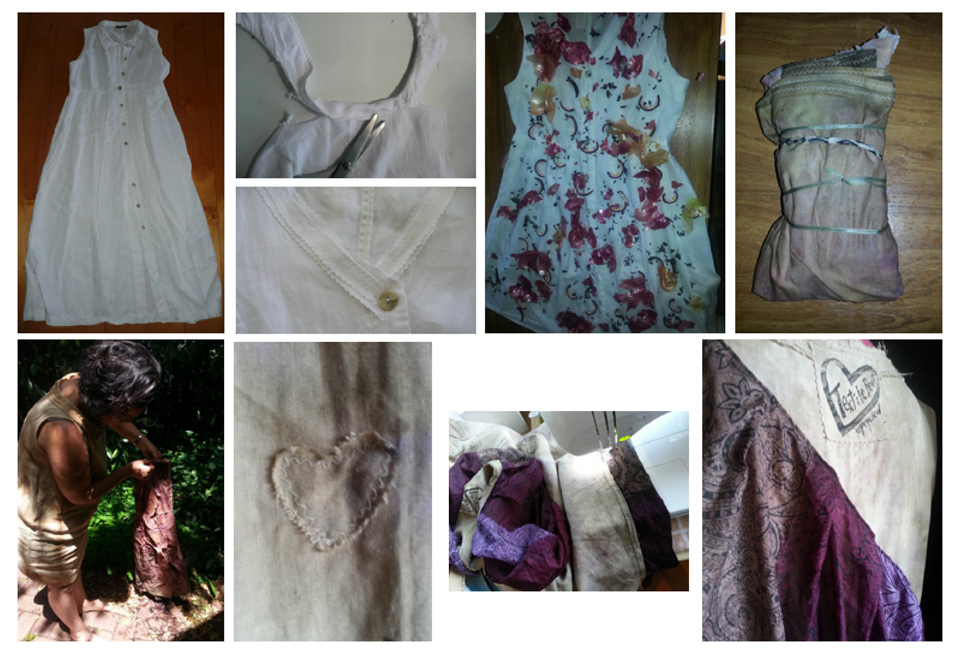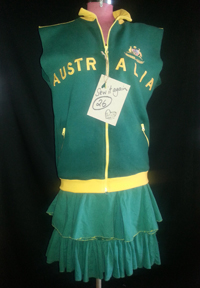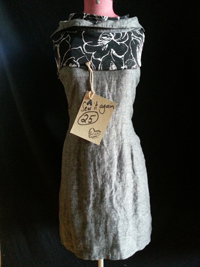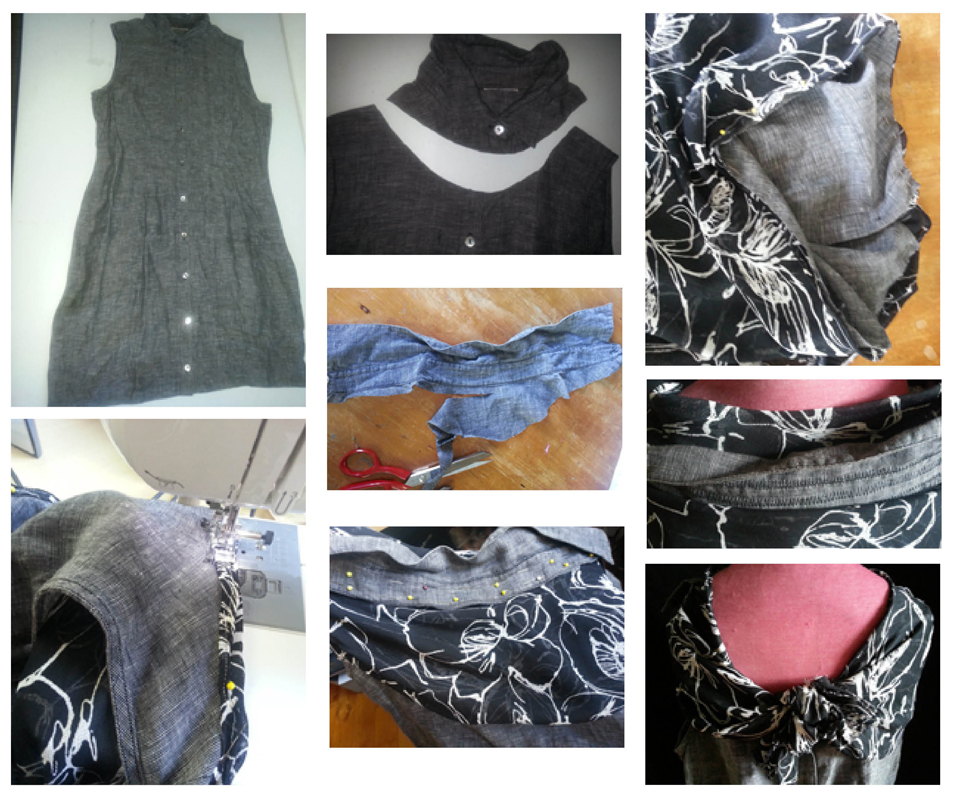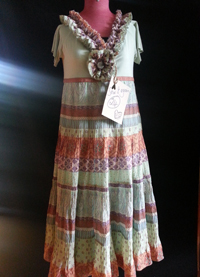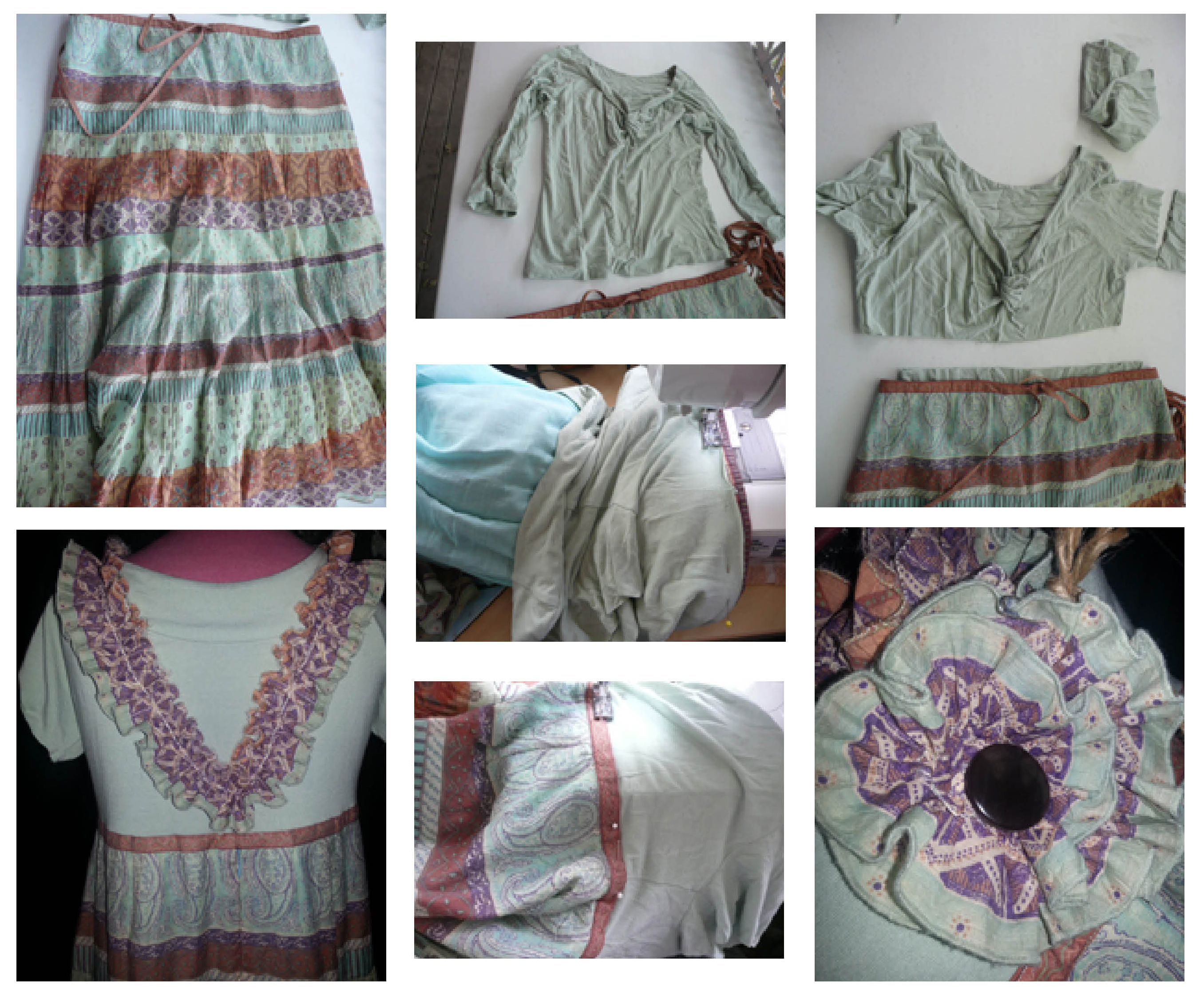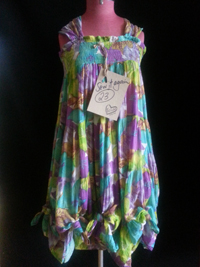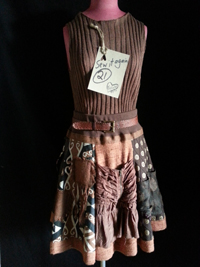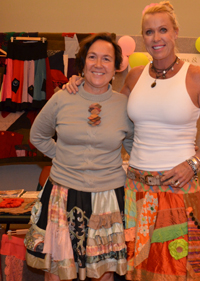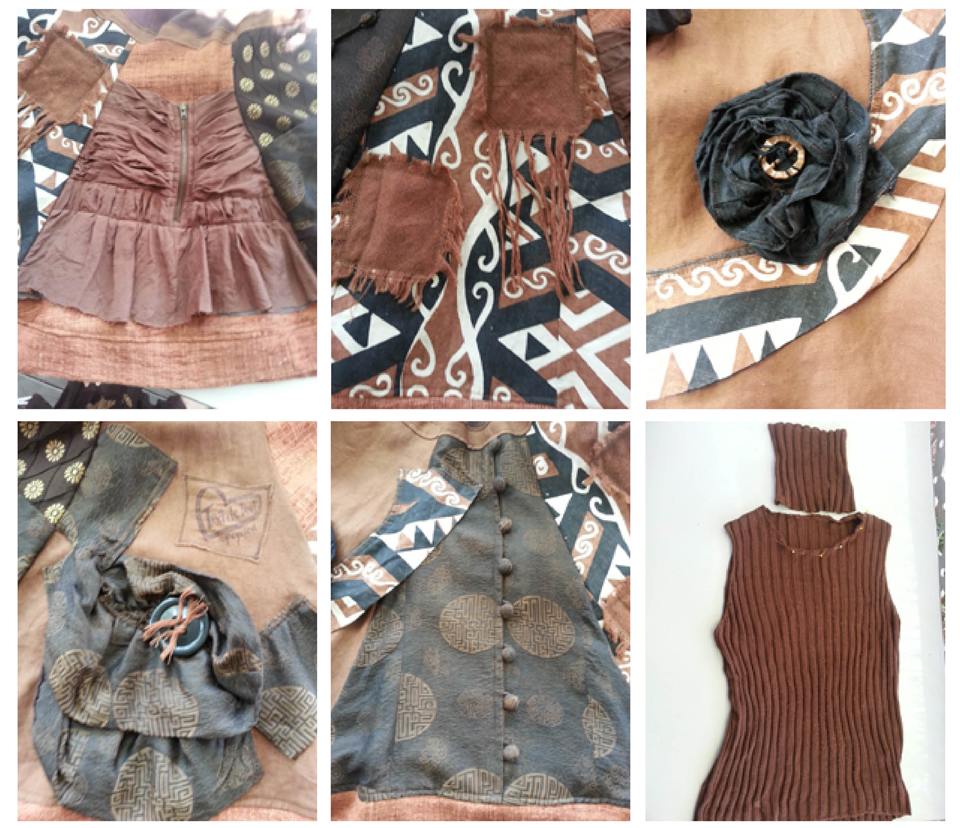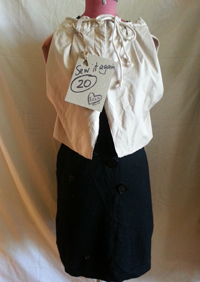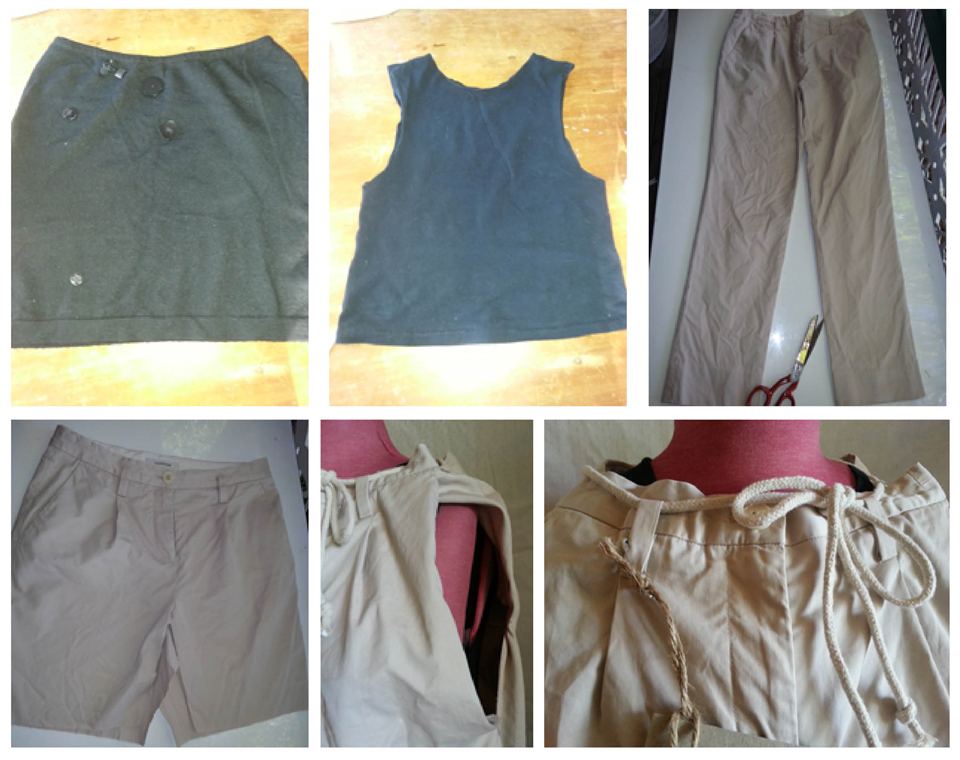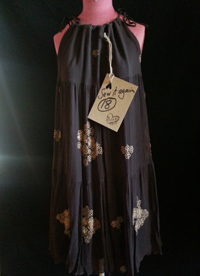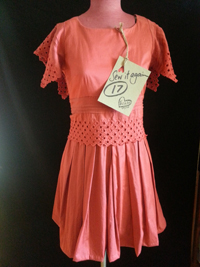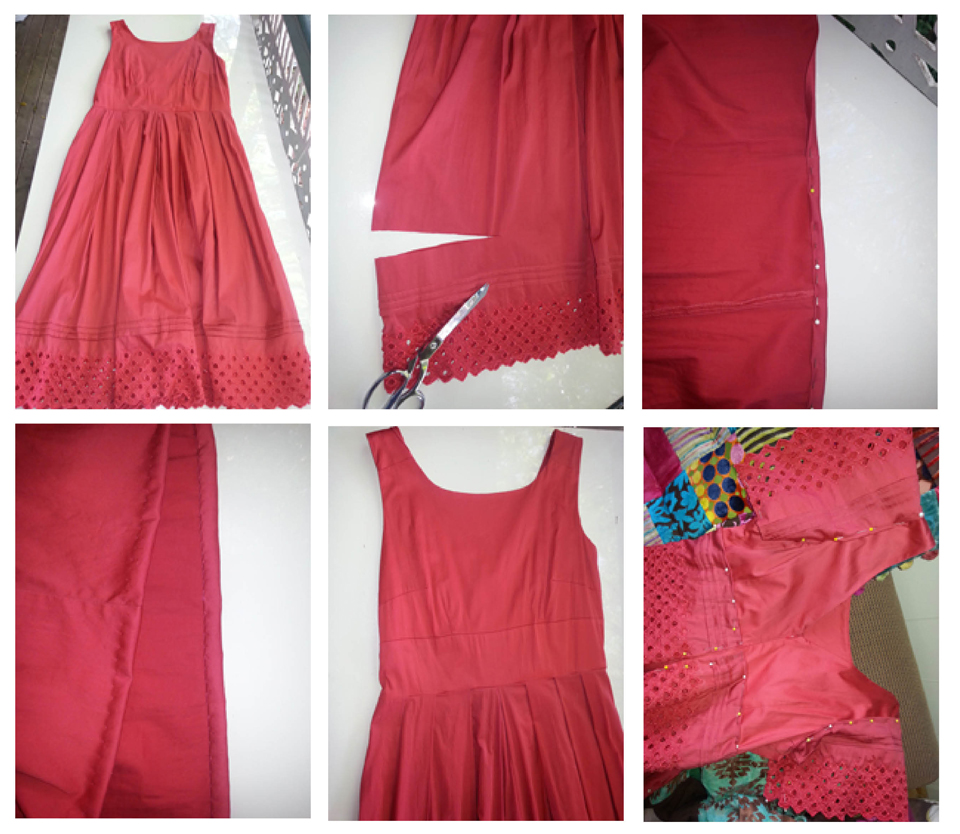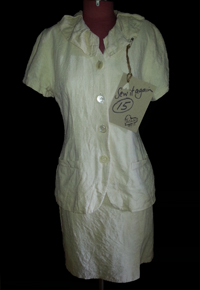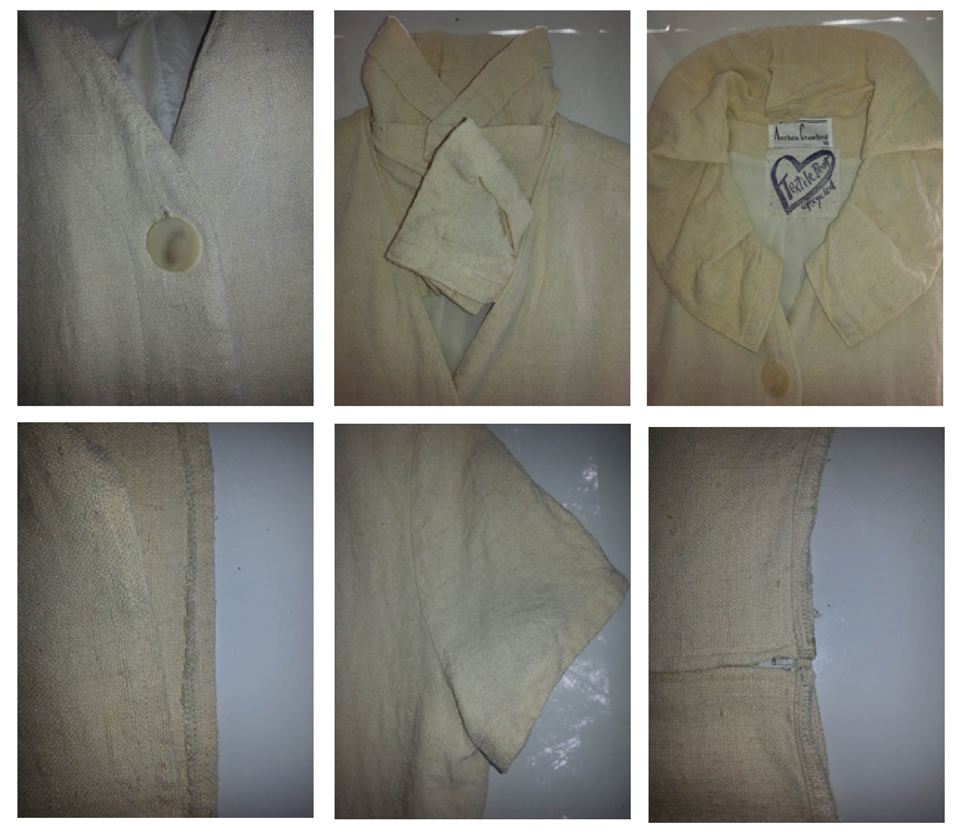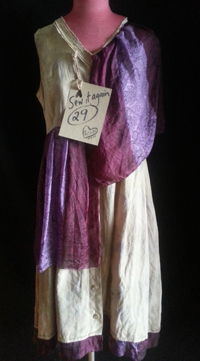 This dress had several makeovers to be what it is today, morphing from long white-collar linen, short no-collar linen, eco-dyed, re eco-dyed, and silk-scarf trimmed.
This dress had several makeovers to be what it is today, morphing from long white-collar linen, short no-collar linen, eco-dyed, re eco-dyed, and silk-scarf trimmed.
All sounds a bit time-consuming, but each stage was a quick change and eventually the garment transformed to be number 29 in my 365-day Sew it Again eco-clothing project.
I’ve bought new the few business suits I own, but the rest of my wardrobe comprises garments I’ve made, altered, salvaged from op shops or been given as cast-off from friends.
I know where my clothes come from, know they are ethically sourced and made of natural fibres (including black cashmere coat Toronto op shop and silk dress Gold Coast op shop).
There’s a growing global awareness about where clothing comes from, how it is produced and its impact on ecological health which mirrors the recent coming to consciousness about food sources and impacts on our own and the planet’s health.
Sustainable apparel consultants such as Shannon Whitehead are bringing awareness to these issues. Shannon summarised in a recent post the six things you should know about your clothes:
- There are chemicals on your clothes
- There are more than 27 million slaves in the world today
- Big retailers are a big problem
- Our old clothes (and disposable behaviour) are ruining Africa’s economy
- It takes decades for your clothing to decompose in a landfill
- We’re not helpless
I began researching this subject while doing leadership study last year which led to my Sew it Again project to demonstrate a different way of dressing by resewing garments from our own and others wardrobes to reuse and repurpose resources that already exist.
Today’s offering had languished in the back of my wardrobe because its button-down front was dated but I love linen and can’t throw it out. I cut the dress to knee-length and cropped off the collar with pinking sheers but found the white was dull (and noticed a small hole which I patched). I used onion and passionfruit skins to dye it – then gave it another burst with passionfruit skins because I loved the purple shades. A silk scarf from a friend complemented the colours so I stitched it on as a drape (and hem trim) to distract from the button-down front. Its earthy and natural – and will be included in Reverse Emporium’s Love Up-Cycled exhibition from February 8.
